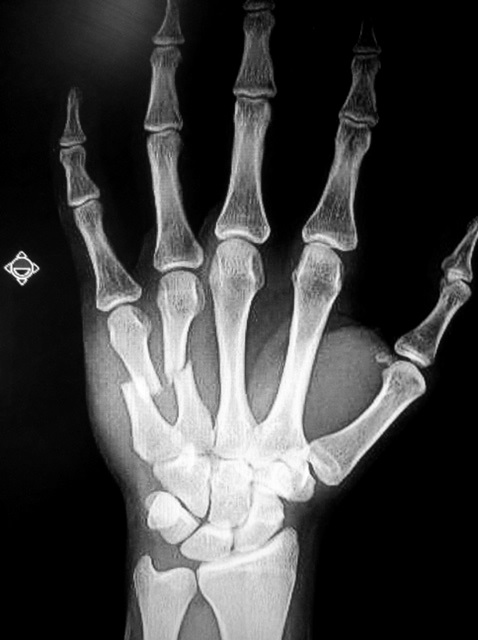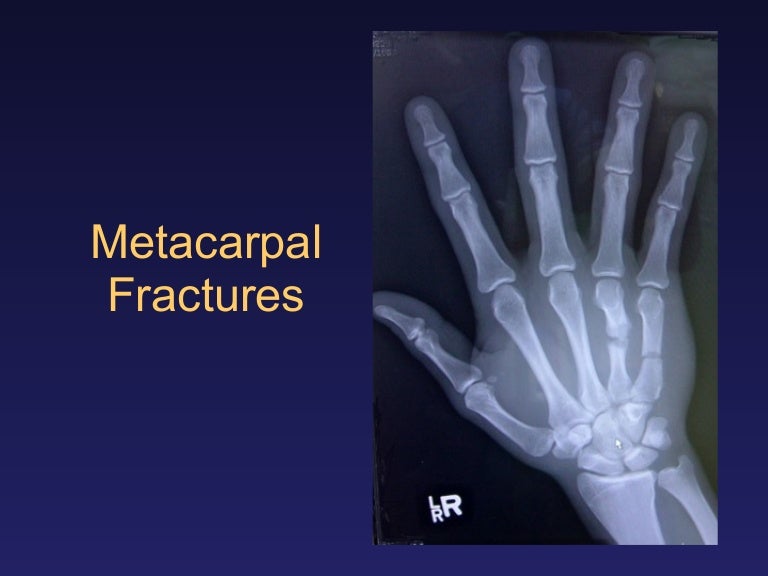

If you need surgery it is best that this be performed within 2 weeks of your fracture. If a metacarpal fracture is displaced or if the fracture pattern is unstable it is likely that surgery will be recommended. Metacarpal fractures - displaced or unstable Click here for more information on driving in Victoria with a hand injury or after hand surgery. One of the most common questions patients ask is "When can I drive?". Your surgeon and hand therapist will be able to advise what is best for you and when you can safely return to normal activities. Often you may be advised to strap your injured finger to another finger for support when you initially stop wearing your splint, or during the first few weeks of activity. You may be advised to avoid heavy loads or contact sports until 8 weeks. At 6 weeks you are usually safe to start using your hand without restrictions. You will be permitted to do light activities (such as eating a meal) when the fracture is not yet fully healed. Speak with your surgeon and hand therapist to determine what is the right time for you, and what sort of exercises you should perform. Usually it is safe to start gentle exercises in a finger with an undisplaced fracture at 3-4 weeks. The speed of fracture healing can be affected by factors such as the type of fracture, your health and your ability to comply with therapy.

METACARPAL FRACTURE FULL
If you are able to keep the joints mobile this means that when your fracture is strong enough to allow full use of your hand then you won't be limited by stiffness - so your rehabilitation time is faster. Wearing a splint protects the fracture while it is healing, but still allows you to remove the splint to perform the finger exercises prescribed by your hand therapist. The disadvantage of a cast is that you cannot remove it to exercise your fingers, so your joints may become stiff. Generally a cast is only used for treating metacarpal fractures for children or individuals who will not be able to keep their fingers safely immobilised with a splint. Your fracture can be treated with splinting, taping or casting (or a combination of all three of these). If your metacarpal fracture is stable and undisplaced (ie the fragments are still in their normal position) it is unlikely that you will need surgery. Some metacarpal fractures require surgery and some don't. examples of specific types of metacarpal fractures.the different types of treatment and surgeries that may be used for metacarpal fractures.fractures involving the joint surfaces, which generally require surgery.displaced fractures, which may require surgery.undisplaced fractures, which generally don't require surgery.There are many different types of metacarpal fractures.


 0 kommentar(er)
0 kommentar(er)
